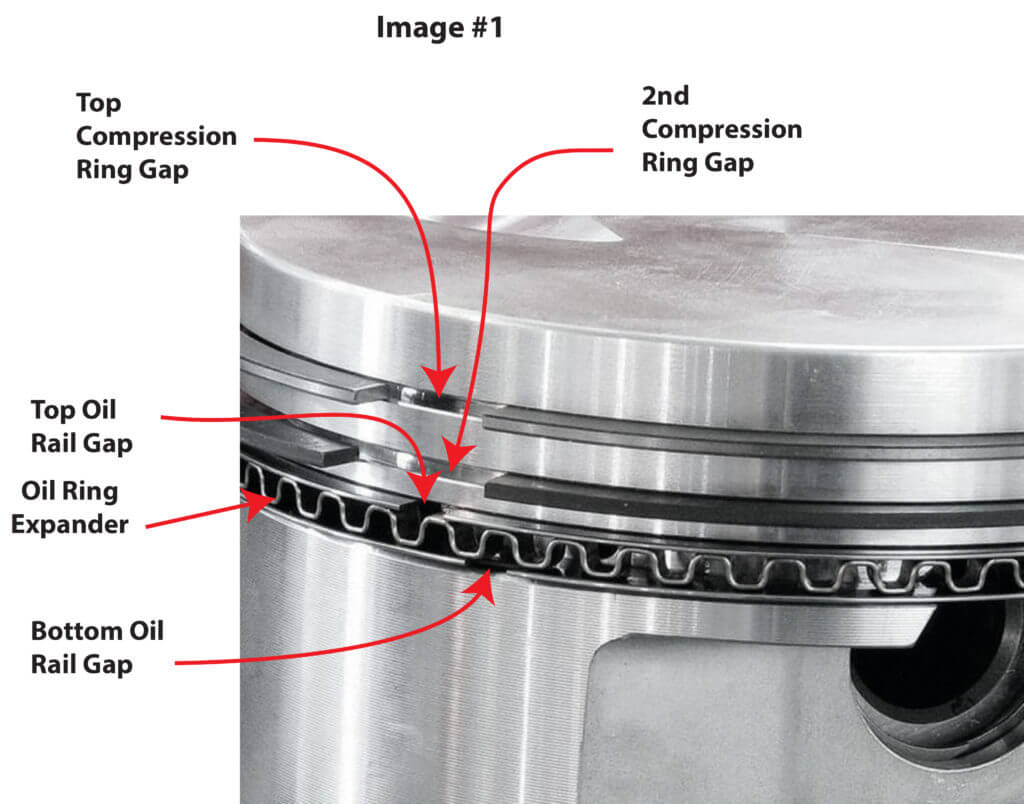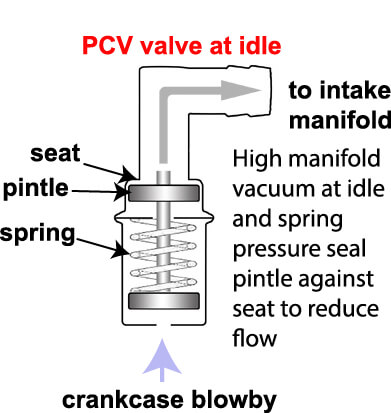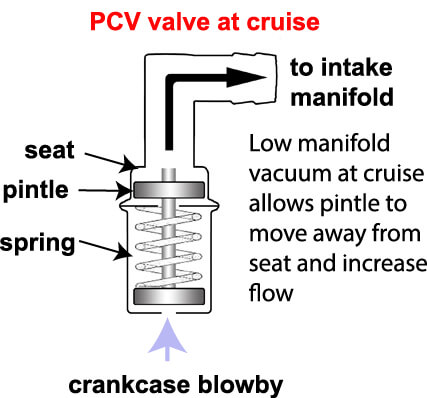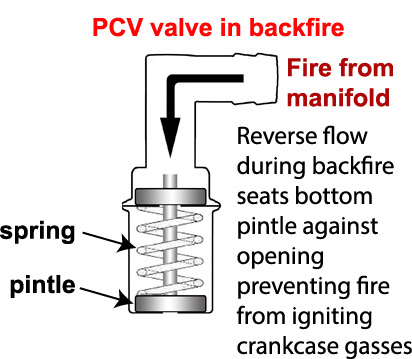PCV Positive Crankcase Ventilation
What is a positive crankcase ventilation system— PCV
Combustion occurs in an engine when the piston compresses an air/fuel mixture and ignites it with a spark. To compress the air/fuel mixture, the piston rings seal against the cylinder wall as the piston rises to compress the mixture. Think of this like a doctor’s syringe where the plunger has a rubber piston with rings around the end. What’s different about an engine piston is that each of the three rings has a gap. During installation, a special tool fits into the gap and expands the ring so it fits over the piston. When the piston is inserted into the cylinder, the ring compresses and reduces the gap. But the gap never closes completely and that’s why every engine is fitted with a positive crankcase ventilation system PCV
How combustion gasses escape past the gap
Now matter how new the engine, the high

Piston rings installed on piston but not staggered. This image just shows how large the piston ring gap is before compression.
pressure created during the combustion process forces air/fuel and exhaust gasses through the piston ring gaps and down into the crankcase. In the early days of engine design, way before pollution controls were mandated, these “blowby” gasses were simply vented to the atmosphere through a tube on the back of the engine. Blowby gasses are a major contributor to air pollution, causing smog and respiratory diseases. To eliminate this pollution, carmakers were forced to develop a positive crankcase ventilation system. Here’s how it works.
How PCV works
A tube is connected from the intake manifold to

At idle the PCV valve restricts airflow
the engine’s valve cover. The intake manifold is always in a vacuum state while the engine is running, so it sucks blowby gasses from the crankcase. Filtered replacement air is provided by another tube from the air filter box, thus, the PCV system acts as a positive crankcase ventilation system.

PCV operation at cruising speeds
PCV valve prevents engine damage from backfire
Since the PCV tubing creates a direct link between the intake and the engine, and since blowby gasses are flammable, carmakers install a one-way check valve between the intake and engine to prevent engine damage in the event of a backfire. If the engine experiences a misfire by way of an intake valve, where fire blows backwards through the intake, the pressure forces the PCV valve to close to prevent the fire from entering the crankcase.

The PCV valve closes to prevent a backfire from igniting crankcase vapors and damaging your engine
A PCV valve is also a metering device
Since the intake is always under vacuum, the PCV valve incorporates an orifice size to the specific engine. The orifice acts as a metering device so the crankcase is under a specified amount of suction. If the orifice is too large, the crankcase would be under too much suction and would actually pull more blowby out of each cylinder. That would reduce engine performance. If the orifice is too small, the blowby gasses would build up too much pressure in the crankcase which can cause valve cover and oil pan gaskets to leak.
What goes wrong with a PCV valve
PCV valves don’t wear out, but the do build up residue. The residue is formed because blowby gasses contain air, fuel, exhaust and oil vapor. As it flows through the check valve, those components can form carbon and sludge buildup on the PCV pintle to the point where it can’t seal off the connection between the intake and engine in the event of a backfire.
©, 2020 Rick Muscoplat
Posted on by Rick Muscoplat
